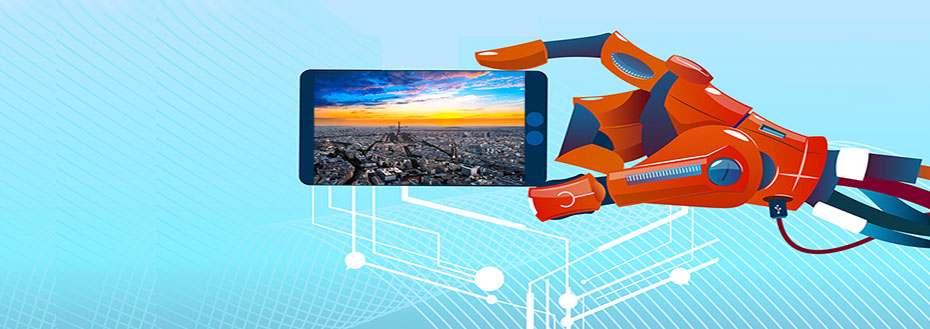We have read and reread the maxim that skill in photography is acquired by practice and not purchase. However, the question that gets asked frequently is whether AI can replace traditional photography and bear good fruit. Many say that inset of Artificial Intelligence in photography will give machines the ability to outperform a photographer's relational reasoning. Whatever the arguments may be, Artificial Intelligence is here to stay and its influence in technical and creative areas will deepen as we move ahead.
Artificial Intelligence will become smarter and capable of taking over more complex duties. But, is traditional photography the next big target of AI scaremongering? A staggering number of possibilities we come across are sometimes exaggerated. So, come along for some answers as we analyze the role of AI in photography.
Truth Behind AI's Influence in Photography
In the past, Google had shared some of its achievements that involved deep learning technology. The tech giant showcased a set of landscape images that were flawlessly edited using deep learning technology. The results were cycled through blind tests with expert photographers as testers. Surprisingly, up to 40% images edited by AI received top ratings. Some images were so well edited that it was hard to tell difference between the ones edited by humans and AI.
But will this be enough to give photographers and editors a run for their money? Without a doubt, Artificial Intelligence in photography will introduce the biggest innovations in the editing department, but it is unlikely to disrupt or threaten traditional photography, at least not anytime soon.
Can Skills of AI Outweigh Humans in Photography?
The most important question everyone asks is "how is AI shaping the photography domain?" To get an answer to that let's look at a photographer's workflow. A professional photographer's role is not just to deliver client assignments on time, but also to snap pictures with great panache. In a typical project, client shares concepts they like to see in the project and a photographer will conceptualize the settings that will meet primary requirements in the best possible way. Let's circumvent nitty-gritty and single out the core objective with a striking consumer example - product photography with boardroom setting.
To get better results from each session, a photographer must visualize results from the client's perspective. Stage setting must be done suitably to get the right mood so that the message easily gets across to viewers. Subtle changes to the scene, character expression, and lighting can alter the underlying message in a photograph. Composing scenes to match with the planned concept is a task only a photographer understands, and it cannot be delegated to AI.
Complex tasks such as prop replacement and compositing are limitations faced by most AI systems including Google's AI. In the boardroom concept, using algorithms to add a few extra items such as coffee mugs and water bottles can never do justice as much as adding a variety of props with complex geometry. Analytical skills of photographers are superior to that of AI. This largely hinders machine's ability to compete or even replace photographer's skill. But then how AI is transforming photography? Perhaps, it is the editing where it makes a mark.
Will Image Editing Skills of AI Be Superior to Humans?
In the editing side of photography, it's the data that counts. Raw data will be equally accessible by photographers and AI system. Since AI is all about using algorithm and data processing, editing tasks can be seamlessly achieved by manipulating certain parameters. To know how AI computer vision is transforming photography, you need to look at some of the recent advancements in portrait mode. Deep learning algorithms on compact devices have made it possible to enhance picture quality by giving them an appeal that was never achieved in the past.
AI can accurately append metadata and keywords to the image for making them easily discoverable. AI systems analyze keywords to perform image lookup and perform editing to satisfy the client's needs. The resulting preview can be readied for client's approval within minutes if not seconds.
Challenges Faced by Photographers in Convincing Clients and Gaining Approval
Since people have varying preferences, it isn't uncommon for clients to feel disillusioned with simple post processed results. From time-to-time, photographers are bombarded with outlandish requests from clients to digitally alter imperfections in their body features. The need to look flawless is a trend that was set off by fashion industry's obsession with skinny models and their unreal appearance. Whatever the case may be, people are willing to pay huge for having their photographs edited in an eccentric way.
On the contrary, some celebrities are idolized for supporting body positivity movement by appealing masses to change their mindset on beauty. In a complex world like ours, it remains to be seen how AI will cope with heaps of editing requests, and whether subject matter will be interpreted better than human editors.
Photographs that tell a story will captivate viewers' emotion and aesthetic value is not always a major concern. An amazing photo with terrible subject may not be as good as a terrible photo with an amazing subject. Post-processing should not always be a go-to solution because, at end of the day, not every photo requires a sophisticated level of touch up.
Moreover, AI isn't fully ready for complete autonomous operations in post-processing. Human intervention would still be critical to accurately interpret a scene and the message behind it. AI-based editing will be successful if post-processing involves minor editing works and slightly more challenging tasks. But, a full-scale autonomous application is a thing of the future.
Conclusion
Hence our pursuit of answers to how AI is changing the photography industry has brought us to post-processing. It is fascinating how AI has influenced the development of sophisticated algorithms that are gradually replacing the way photographs are edited. That said, future holds plenty of surprises that are waiting to make global headlines. However, chances of this technology replacing what humans bring to the field of photography are slim.
Choose Flatworld Solutions for High-quality Image Editing Services
Flatworld Solutions is a leading photo editing services outsourcing company. With 22 years of experience under the belt, we have delivered the most promising results to clients worldwide. We understand the role of AI in photography to get accurate results in post processing hence our team of skilled image editors uses top of the line AI-based software to give richness and vibrancy to your photographs. We are well equipped to provide you cost-effective services from our global offices or as an extension of your in-house team. We offer many other services such as real estate image editing services, image enhancement services, portrait services, and more.
If you are looking for a reliable, accurate, efficient, and cost-effective photo editing service provider, then you have come to the right place. Get in touch with us today!
Contact UsOur Customers





Join the growth phase at Flatworld Solutions as a Partner
Service distributorship and Marketing partner roles are available in select countries. If you have a local sales team or are a person of influence in key areas of outsourcing, it's time to engage fruitfully to ensure long term financial benefits. Currently business partnerships are open for Photo Editing, Graphic Design, Desktop Publishing, 2D and 3D Animation, Video Editing, CAD Engineering Design and Virtual Walkthroughs.
Reach out to us for a quick direct response from decision makers at the Flatworld Solutions global team.

USA
Flatworld Solutions
116 Village Blvd, Suite 200, Princeton, NJ 08540
PHILIPPINES
Aeon Towers, J.P. Laurel Avenue, Bajada, Davao 8000
KSS Building, Buhangin Road Cor Olive Street, Davao City 8000


